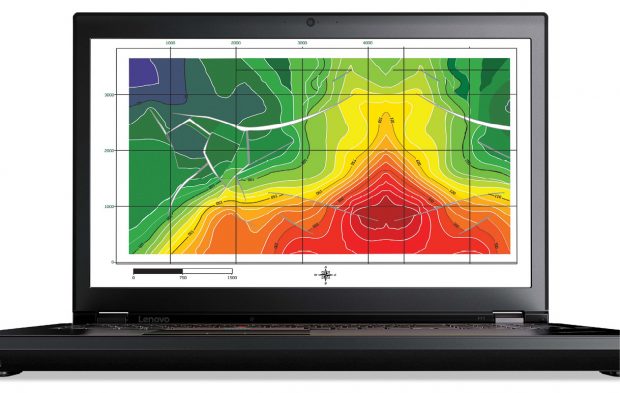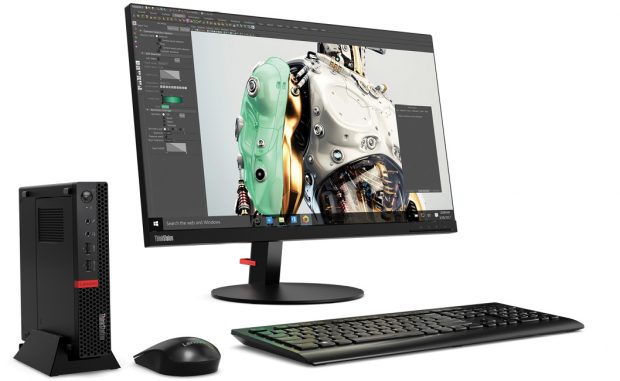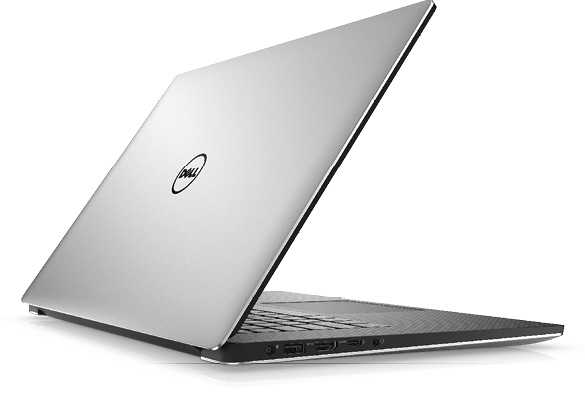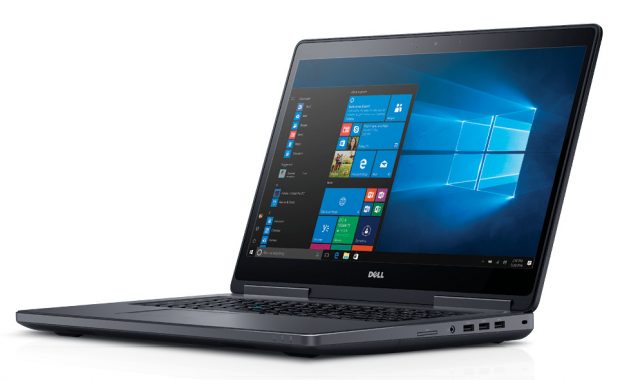Mobile Computing Workflows for Engineers

Image courtesy of Lenovo.
Latest News
September 1, 2017
More engineers and designers are taking their work home, on the road and to client locations, which has resulted in increasing interest in mobile workstations and other remote work options.
In most cases, that has meant purchasing high-end mobile workstations equipped with powerful graphics and compute resources. In some instances, designers are even working exclusively with mobile devices.
“We’re seeing some migration from the tower side, and some migration from standard notebook users (who) realize they need a more powerful machine,” says Lane Jesseph, Lenovo’s worldwide mobile workstation product manager.
Technology advancements in the mobile space have hastened this transition along. It’s now possible to get near-tower-level performance from a mobile workstation, which has expanded the way designers can use their applications.
“Having enterprise-wide engineering on the go capabilities creates additional revenue opportunities for companies,” says Mark Bialic, president of Eurocom. “You can dispatch engineers to any organization and they can effectively work at the customer location and get feedback on site while interacting with clients. You can make the design process much more efficient and cut out non-productive time of traveling back and forth between sites.”
 Image courtesy of Lenovo.
Image courtesy of Lenovo.Most of the time, engineers are going to need a powerful mobile workstation capable of running CAD software and other programs that can do more than work in tandem with a desktop workstation or as a replacement.
“Since the Quadro refresh, we see very little difference between the desktop and laptop side,” says Maggie Chen, product manager for mobile workstations at MSI. “There are thin and light mobile workstations that are out now that are pretty powerful. We have a device that is both thin and light and still has a mid-range GPU, and we are launching VR-ready mobile workstations.”
“Engineers can use these workstations to complete a design, do testing and work with a client at the customer’s physical location,” Bialic says. “It’s not just a question of business going global, but there are opportunities outside of the engineer’s primary location. If you have a client in another country, the designers will spend time working at those locations worldwide. They need to be able to do heavy design work on these mobile workstations.”
Heavy-duty Notebooks
Mobile workstations stand apart from traditional laptops in both their compute power and also their physical specifications. Because these are heavy-duty devices, they are usually larger, heavier, and are designed for 24/7 usage.
Current GPUs for mobile systems can essentially match the performance of a desktop system at this point, with a few exceptions. “You can put multiple GPUs in a desktop, but we can’t match that in mobile right now,” Jesseph says. “Desktops also have an advantage on the CPU side, in that you can get a tower with 22 dual-core CPUs, and mobile can’t compete with that. The same is true of memory. There’s much more capacity.”
 Some design engineers are opting for portable mini workstations, such as the Lenovo ThinkStation P320 Tiny. Image courtesy of Lenovo.
Some design engineers are opting for portable mini workstations, such as the Lenovo ThinkStation P320 Tiny. Image courtesy of Lenovo.There is continuing pressure on manufacturers to make the workstations faster as well as thinner and lighter, but the laws of physics present some limitations on that front.
“Consider the CPU and graphics processing unit horsepower we have to put inside, the amount of memory required, the fact that a lot of users like multiple storage devices, and they want HDMI, smart card readers, and serial ports, and all of this technology has to be put in this package,” Jesseph says. “We can do that, it’s not going to be small and we have to be able to keep it cool.”
Users also want the ability to upgrade memory and add devices, which will further constrain just how light these devices can be. “I don’t see enterprise-grade mobile workstations getting much thinner than they are today,” Jesseph says.
“People want something they can take comfortably on an airplane, and we see things trending toward that,” adds AJ Christon, global product manager for mobile workstations at HP. “They want better looking devices with more of an emphasis on design without sacrificing horsepower.”
That has resulted in the emergence of lighter weight, convertible options targeted at CAD users. Lenovo markets its ThinkPad P40 Yoga for this market, which comes in under 4 lbs. and can be used in notebook, tent, stand or tablet modes. Power users would find the performance of these devices lacking, but they are adequate for lighter design use.
 Dell’s Precision 5520 mobile workstation is available in a special 20th anniversary edition for a limited time. Image courtesy of Dell.
Dell’s Precision 5520 mobile workstation is available in a special 20th anniversary edition for a limited time. Image courtesy of Dell.Dell’s Precision line of mobile workstations include the 3000 series of 15-in. mobile workstations that feature relatively low price points, the 5000 series of 15-in. workstations that are 11.1 mm thick and start at less than 4 lbs. and the 7000 Series of 15- and 17-in. workstations that can be configured with quad-core Intel Xeon or Core processors and up to 4TB of storage.
HP’s Zbook Studio is another example. The 15-in. workstation is 18 mm thick with quad-core Xeon processors, NVIDIA Quadro M1000 graphics and 32GB of RAM, and it weighs just 4.4 lbs.
But Christon adds that designers are always going to want additional ports and other options that will restrict downsizing of the devices.
“Our customers don’t work that way,” Christon says. “You also need room for the engine to drive all that workload. You need room for thermal management and for the parts themselves. From a physics perspective, we are getting closer to the point of diminishing returns. You can’t make the workstation significantly thinner with the same horsepower.”
Security is another key concern for the expanding population of mobile workstation users, and manufacturers are addressing this in various ways.
 The Dell Precision 7720 17-in. mobile workstation can be configured with 7th Generation Intel Core i5, i7 and Intel Xeon processors. Image courtesy of Dell.
The Dell Precision 7720 17-in. mobile workstation can be configured with 7th Generation Intel Core i5, i7 and Intel Xeon processors. Image courtesy of Dell.“The most secure mobile workstations are going to have fingerprint readers, smart card readers and password protection,” Christon says. “You don’t see as much concentration on BIOS-level security. If someone gains access there, they have access to everything. So we’ve taken a lot of measures to make sure our BIOS is secure and non-corruptible.”
When it comes to displays, 4K is becoming standard for mobile workstations. “But not everyone feels like they want that yet,” says Michael Ly, associate marketing manager for mobile workstations at MSI. “We offer both 4K or 1080p and we let the customer base determine which ones they want. Most of them will eventually be 4K. The software is starting to more widely support 4K, but most users want full HD.”
“Hopefully we are at the end of the pixel wars, and manufacturers will focus on improving the image on the screen,” Jesseph says. “HDR [high dynamic range] is coming into the fold, and we’re seeing brighter panels with more color depth and a higher dynamic range. Now you can get 10-bit color depth, which brings you up to 1.1 billion colors.”
Christon at HP says that there has been increasing interest in full-HD touchscreen displays as well.
Tiny Desktop in Your Hand
For designers interested in working remotely, mobile workstations aren’t the only solution available.
Another option that is not technically a mobile solution but that can be easily made mobile is the idea of the tiny desktop or mini workstation. Lenovo, for example, offers the ThinkStation P320, which measures just 1.4x7.1x7.2-in, and weighs just 2.9 lbs. It has an Intel Core i7 CPU and NVIDIA Quadro P600 graphics.
HP offers the Z2 Mini G3, which has a board architecture similar to a mobile workstation but is packaged as a very small desktop. “You get something that is very small, passes MIL-STD (military standard) tests and takes up less workspace in offices,” Christon says.
The 4.85-lb. device has an external power brick, a 1TB 7,200 rpm hard drive and supports Intel Xeon E3-1200v5 and Intel Core processors. These devices typically perform much like a mobile workstation in terms of processing power.
These mini workstations are not only highly portable (minus a monitor, they are much lighter than a comparable mobile workstation), but can also be used in virtual desktop infrastructure (VDI) configurations for virtual machine or cloud-based access.
“It’s a different use case, and very much an entry-level workstation,” Lenovo’s Jesseph says. “It’s a mix of technology that combines desktop and notebook elements. The desktop savings are good as far as how small the chassis is. It will be interesting to see how it fills a niche over the next few years.”
Remote Access Solutions
There are other options apart from investing in these heavy-duty mobile workstations. Some companies have invested in remote desktop access or VDI using a client-server model. Users can log into desktop- or server-based compute resources on a standard mobile device.
BOXX, for example, offers a VDI solution in its ProVDI 8401R-V, which provides virtual desktop access with little or no latency. (See “Going Virtual with the BOXX ProVDI 8401R-V,” July 2017, for DE’s review.)
However, in some mobile work scenarios, designers may find themselves working with poor, unreliable connections or no internet connection at all.
“As long as you have a big fat pipe going to the desktop, you are OK,” Jesseph says. “It’s something people like to talk about, but it’s very difficult to implement because of the expertise that’s needed and the overhead cost. Very few have the resources to implement it.”
“A major problem we have always encountered with (the) remote desktop is bandwidth,” adds Robert Bragaglia, marketing director at @Xi Computer. “If you try to use CAD over a Wi-Fi connection you will not be very productive. If you have the bandwidth, sure it will work, but otherwise it won’t.”
Mobile Workstations: Future Innovations
Customers will continue to demand thinner, lighter devices, and some advancements in design will help enable that up to a point.
“Everybody wants thinner and lighter,” Jesseph says. “What we have to do is balance how much we can squeeze the chassis room vs. keeping the processing power in there. It’s an exercise in physics and sacrifice. What are end users willing to do without from a port set, memory or storage perspective?”
Power bricks are also due for a downsize. “A 2-lb. power supply for a 6-lb. machine is prohibitive,” Jesseph says. “That’s something we’re looking at, and there is new technology coming. We are looking to greatly reduce the size of the power bricks over the next product cycle.”
Upgrades to storage, processors and memory capacity will also help boost performance. MSI has upgraded its WS63 workstation with the Max-Q Quadro P400 GPU. The new WT73VR leverages the Quadro P5000 and can run and create virtual reality content.
Some other options are emerging for designers using less-robust notebooks. At SIGGRAPH, NVIDIA announced that users could address underpowered graphics on mobile devices using an external GPU chassis to connect NVIDIA Quadro or TITAN X graphics cards. These external GPU options will be available from partners beginning this month.
Intel’s 3D XPoint Optane solutions provide a non-volatile memory option that is both faster and cheaper than DRAM. Bragaglia at @Xi says that rotational drives are dying, which will help further reduce size and weight on mobile workstations. “We envision smaller, slimmer dimensions overall,” Bragaglia says.
The future of mobile design will likely involve a mix of powerful workstations, remote computing and cloud-based software options. With more designers taking their work on the road, firms will increasingly need to explore ways to affordably provide these capabilities.
“They want to carry the work with them,” Bragaglia says. “They can be working anywhere in the world and have the same tools they do at their office. That’s the vision.”
More Info
Subscribe to our FREE magazine, FREE email newsletters or both!
Latest News
About the Author
Brian Albright is the editorial director of Digital Engineering. Contact him at [email protected].
Follow DE





